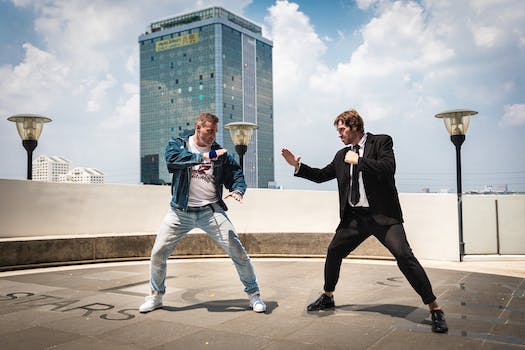Roma Movie Review: An Unforgettable Cinematic Masterpiece
- 1. Introduction
- 1.1. Overview of the movie ‘Roma’
- 1.2. Director and cast
- 1.3. Plot summary
- 1.4. Release date and reception
- 1.5. Importance and impact
- 2. Cinematography and Visuals
- 2.1. Impressive black-and-white cinematography
- 2.2. Attention to detail
- 2.3. Symbolism and visual storytelling
- 2.4. Use of long takes
- 2.5. Capturing the essence of 1970s Mexico City
- 3. Character Development and Performances
1. Introduction
Roma Movie Review: An Unforgettable Cinematic Masterpiece.
1.1. Overview of the movie ‘Roma’
Roma is a mesmerizing cinematic masterpiece that has captivated audiences worldwide. Directed by Alfonso Cuarón, this film takes viewers on an emotional journey through the life of Cleo, a young domestic worker in 1970s Mexico City. With its stunning black and white cinematography, Roma beautifully captures the complexities of human relationships and the struggles faced by marginalized individuals in a rapidly changing society. This article will provide an in-depth overview of the movie, highlighting its powerful storytelling, exquisite visuals, and thought-provoking themes.
1.2. Director and cast
Roma is a critically acclaimed movie directed by Alfonso Cuarón. The film features a talented cast that brings the story to life with their exceptional performances.
The director, Alfonso Cuarón, is known for his masterful storytelling and visual style. With Roma, he has once again proven his ability to captivate audiences and create an unforgettable cinematic experience.
The cast of Roma includes Yalitza Aparicio in the lead role as Cleo, a domestic worker for a middle-class family in Mexico City. Aparicio delivers a remarkable performance, showcasing her talent and emotional depth.
Joining Aparicio is Marina de Tavira, who portrays Sofia, the matriarch of the family. De Tavira’s portrayal is powerful and moving, adding another layer of complexity to the story.
The supporting cast includes Diego Cortina Autrey, Carlos Peralta, and Marco Graf, who all deliver outstanding performances and contribute to the film’s overall brilliance.
Together, the director and cast of Roma have created a cinematic masterpiece that will leave a lasting impact on viewers.
1.3. Plot summary
Roma is a movie that takes viewers on an unforgettable cinematic journey. Set in 1970s Mexico City, the film tells the story of Cleo, a young domestic worker for a middle-class family. The movie beautifully captures the daily life and struggles of Cleo and the family she works for, highlighting themes of love, loss, and societal tensions. As the plot unfolds, we witness Cleo’s personal experiences and witness the impact of political and social unrest on her life. Through stunning visuals and powerful storytelling, Roma delivers a poignant and emotionally rich narrative that will leave a lasting impression on audiences.
1.4. Release date and reception
The release date for the movie Roma was on November 21, 2018. It was directed by Alfonso Cuarón and produced by Esperanto Filmoj and Participant Media. The film received widespread critical acclaim and was praised for its stunning cinematography, heartfelt storytelling, and powerful performances. It won numerous awards, including the Golden Lion at the 75th Venice International Film Festival and three Academy Awards. Roma is considered an unforgettable cinematic masterpiece that has left a lasting impact on audiences worldwide.
1.5. Importance and impact
The movie Roma has left a lasting impact on both audiences and critics alike. Directed by Alfonso Cuarón, this cinematic masterpiece has garnered significant importance in the film industry. The film tells the story of Cleo, a young domestic worker in Mexico City, and her journey through love, loss, and resilience. Through its stunning visuals, powerful performances, and poignant storytelling, Roma has managed to captivate viewers and create a profound emotional impact. It has received critical acclaim and numerous accolades, including multiple Academy Awards. The film’s significance extends beyond its artistic achievements, as it also addresses important societal issues such as class dynamics, gender roles, and political unrest. With its thought-provoking narrative and exceptional craftsmanship, Roma has become an unforgettable piece of cinema that continues to resonate with audiences around the world.
2. Cinematography and Visuals
Cinematography and Visuals
The film Roma, directed by Alfonso Cuarón, showcases breathtaking cinematography and visually stunning scenes. From start to finish, the movie captivates the audience with its artistic and meticulous attention to detail.
Cuarón’s use of long, uninterrupted takes allows the viewers to immerse themselves fully in the story. The camera movements are smooth and deliberate, guiding our gaze and enhancing the emotional impact of each scene.
The black and white cinematography adds a timeless and nostalgic quality to the film. It highlights the contrast between light and shadow, emphasizing the depth and richness of the visuals. Every frame is beautifully composed, with careful consideration given to framing and composition.
The attention to detail in the production design is remarkable. The film recreates 1970s Mexico City with such authenticity that it feels like stepping into a time capsule. Whether it’s the bustling streets, the interiors of the houses, or the rural landscapes, each setting is meticulously crafted.
Overall, Roma is a visual treat that transports the audience to a different time and place. The combination of exceptional cinematography, stunning visuals, and attention to detail make it an unforgettable cinematic masterpiece.
2.1. Impressive black-and-white cinematography
One of the most striking aspects of the movie Roma is its impressive black-and-white cinematography. Director Alfonso Cuarón masterfully captures every scene with meticulous attention to detail, creating a visually stunning experience for the viewers.
The choice to film in black and white adds a timeless and nostalgic quality to the film. It enhances the storytelling by stripping away distractions and allowing the audience to focus solely on the emotions and the narrative. The monochromatic palette also serves to emphasize the contrasts and textures in each frame, highlighting the beauty in the simplest of moments.
Cuarón’s use of long takes and wide shots further enhances the visual impact of the film. The camera glides through each scene, immersing the audience in the world of the characters. The cinematography is not only aesthetically pleasing but also serves as a powerful storytelling tool, creating a sense of intimacy and connection with the characters and their surroundings.
Overall, the black-and-white cinematography in Roma is truly impressive, elevating the film to a cinematic masterpiece. It is a testament to Cuarón’s artistic vision and his ability to create visually stunning and emotionally resonant storytelling.
2.2. Attention to detail
In Roma, the attention to detail in the cinematography and visuals is truly remarkable. Every frame is meticulously composed, showcasing the director’s keen eye for capturing the beauty of everyday life. The black and white imagery adds a timeless and nostalgic quality to the film, enhancing its emotional impact. The use of long takes and wide shots allows the audience to immerse themselves in the story, feeling as if they are right there alongside the characters. The lighting and color grading further contribute to the overall atmosphere, creating a visually stunning experience. From the bustling streets of Mexico City to the serene beaches of Tuxpan, each location is captured with precision and authenticity. The attention to detail extends beyond the visuals, with the production design and costume choices reflecting the time period and social context of the story. Overall, the cinematography and visuals in Roma are nothing short of exceptional, elevating the film to a level of artistic brilliance.
2.3. Symbolism and visual storytelling
Symbolism and visual storytelling play a crucial role in the cinematography and visuals of the movie Roma. Director Alfonso Cuarón uses various symbolic elements to enhance the narrative and create a visually stunning experience for the audience.
One of the key symbols in the film is water. Water is used as a recurring motif throughout the movie, representing both life and cleansing. It is often shown in scenes that depict emotional moments or turning points in the story. For example, water is present during the birth of a baby, symbolizing the beginning of a new life. It is also used during intense moments of conflict or tragedy, representing the need for emotional release and healing.
Another significant symbol in Roma is the use of mirrors. Mirrors are frequently used to reflect the characters’ emotions and inner struggles. They serve as a visual metaphor for self-reflection and introspection. Through the use of mirrors, Cuarón invites the audience to delve deeper into the characters’ thoughts and feelings, creating a more intimate connection between the viewer and the story.
Furthermore, the color palette and composition of each shot in Roma are meticulously crafted to evoke specific emotions and enhance the storytelling. The movie predominantly uses a muted and earthy color scheme, which adds a sense of realism and authenticity to the scenes. The cinematography also incorporates long takes and tracking shots, allowing the audience to immerse themselves in the characters’ world and experience the events alongside them.
In conclusion, the symbolism and visual storytelling in Roma elevate the film to a cinematic masterpiece. Through the use of water, mirrors, and carefully crafted visuals, director Alfonso Cuarón creates a visually captivating and emotionally resonant experience for the audience.
2.4. Use of long takes
The use of long takes in Roma is a standout aspect of its mesmerizing cinematography and visuals. Director Alfonso Cuarón employs these extended shots to create a sense of immersion and intimacy, allowing the audience to fully experience the world of the film. By avoiding quick cuts and edits, Cuarón captures the beauty and complexity of everyday life, from mundane moments to emotionally charged scenes.
The long takes in Roma also serve to enhance the storytelling and thematic elements of the movie. Through uninterrupted shots, the audience is able to observe the characters’ actions and reactions in real-time, which adds a layer of authenticity and realism to the narrative. These extended sequences provide a deeper understanding of the characters’ motivations and emotions, making their journeys more compelling and relatable.
Furthermore, the use of long takes in Roma showcases the mastery of cinematography. The camera movements and compositions are meticulously choreographed, creating visually stunning and poetic scenes. Cuarón’s attention to detail and his ability to seamlessly navigate through different spaces and perspectives within a single take demonstrate his technical expertise and artistic vision.
Overall, the use of long takes in Roma elevates the film’s visual storytelling and immerses the audience in its world. It is a testament to the power of cinematography in capturing the essence of a story and creating a truly unforgettable cinematic experience.
2.5. Capturing the essence of 1970s Mexico City
The cinematography and visuals in the movie Roma capture the essence of 1970s Mexico City with stunning precision. Director Alfonso Cuarón’s meticulous attention to detail transports the audience back in time, immersing them in the vibrant and gritty atmosphere of the era.
Through the use of black and white cinematography, Cuarón creates a sense of nostalgia and authenticity. The monochromatic visuals not only pay homage to the era but also enhance the emotional depth of the story. The contrast between light and shadow, the intricate framing of each shot, and the careful composition contribute to the overall visual appeal.
Furthermore, the camera movements in Roma are masterfully executed. Cuarón seamlessly glides through various spaces, capturing the bustling streets, the intimate interiors, and the vast landscapes of Mexico City. The long takes and smooth tracking shots create a sense of fluidity and allow the viewers to feel as if they are wandering through the city alongside the characters.
The attention to detail extends beyond the visuals themselves. The production design, costumes, and props successfully recreate the 1970s setting. From the vintage cars and architecture to the fashion choices and cultural references, every element contributes to the authenticity of the film.
In conclusion, the cinematography and visuals in Roma play a crucial role in capturing the essence of 1970s Mexico City. The meticulous attention to detail, the use of black and white cinematography, and the masterful camera movements all work together to create an unforgettable cinematic masterpiece.
3. Character Development and Performances
Character Development and Performances
The movie Roma is a masterclass in character development and performances. The characters in this film are portrayed with such depth and authenticity that they feel like real people. Each character is given ample screen time to develop and evolve, allowing the audience to form a strong emotional connection with them.
One of the standout performances in Roma is by Yalitza Aparicio, who plays the lead role of Cleo. Aparicio’s portrayal of Cleo is stunningly raw and powerful. She brings a quiet strength and vulnerability to the character, making her instantly relatable and sympathetic.
Another noteworthy performance is by Marina de Tavira, who plays Sofia, the matriarch of the family that Cleo works for. Tavira delivers a nuanced and heartbreaking performance, capturing the complexities of Sofia’s character and her struggles with personal loss.
The supporting cast in Roma is equally impressive. Each actor brings a unique and compelling presence to their respective roles, adding depth and richness to the overall narrative.
Overall, the character development and performances in Roma are nothing short of exceptional. The film’s ability to create such fully realized and compelling characters is a testament to the skill and talent of the cast and crew involved in its creation.
3.1. Protagonist Cleo and her journey
Protagonist Cleo and her journey: One of the most captivating aspects of the movie ‘Roma’ is the character development and performances, particularly that of the protagonist, Cleo. Cleo, portrayed brilliantly by Yalitza Aparicio, takes us on an emotional journey through her life as a domestic worker in Mexico City during the early 1970s.
From the beginning, Cleo’s character is introduced as a quiet and observant young woman, dedicated to her job and the family she works for. However, as the story progresses, we witness her transformation and the challenges she faces.
Throughout the narrative, Cleo experiences a range of emotions, from joy and love to heartbreak and despair. Her journey becomes a reflection of the societal and political changes happening in Mexico during that time.
Aparicio’s performance is nothing short of remarkable. Despite being a first-time actress, she brings an authenticity and vulnerability to Cleo that is truly captivating. Her subtle expressions and nuanced portrayal make Cleo a relatable and empathetic character.
The development of Cleo’s character is not limited to her personal growth but also highlights the complexities of relationships, particularly her bond with the family she serves. The interactions between Cleo and the family members reveal layers of compassion, trust, and ultimately, a sense of belonging.
In conclusion, Cleo’s journey in ‘Roma’ is a testament to the power of character development and exceptional performances. It is through her experiences that we gain a deeper understanding of the larger themes explored in the movie.
3.3. Emotional depth of the characters
The emotional depth of the characters is a standout aspect of the film Roma. Director Alfonso Cuarón masterfully develops each character, allowing the audience to deeply connect with their experiences and struggles. The film primarily revolves around Cleo, the housekeeper, and her relationship with the family she works for. Cleo is portrayed with such authenticity and nuance that it is impossible not to feel her pain, joy, and everything in between. Through her journey, we witness her growth and resilience, as well as her vulnerability and moments of despair.
In addition to Cleo, the other characters in Roma are also given significant emotional depth. The children of the family, Pepe and Sofi, are depicted with innocence and curiosity, which makes their interactions with Cleo all the more endearing. Even the family members, such as Sofia and Antonio, undergo their own emotional transformations throughout the film. Their complexities and conflicts are portrayed with great sensitivity, making them relatable and adding layers to the overall narrative.
The performances in Roma are exceptional, with the actors effectively conveying the emotional depth of their respective characters. Yalitza Aparicio delivers a remarkable performance as Cleo, capturing her emotions with such authenticity that it feels like we are experiencing them alongside her. Marina de Tavira as Sofia also shines in her portrayal of a mother struggling to keep her family together amidst personal challenges. The performances by the child actors, Marco Graf and Daniela Demesa, are equally impressive, showcasing their natural talent and ability to convey complex emotions.
Overall, the emotional depth of the characters in Roma adds a profound layer to the film’s storytelling. It allows the audience to form a deep connection with the characters, empathize with their struggles, and ultimately be moved by their journeys.
3.4. Performance highlights
Roma showcases exceptional character development and performances, making it an unforgettable cinematic masterpiece. The film takes viewers on a journey through the life of Cleo, a domestic worker in 1970s Mexico City. The character development in Roma is remarkable, as Cleo’s story unfolds with depth and authenticity. Her struggles, emotions, and growth are beautifully portrayed, allowing the audience to connect with her on a profound level.
The performances in Roma are nothing short of extraordinary. Yalitza Aparicio delivers a stunning debut performance as Cleo, capturing the character’s vulnerability and resilience with remarkable skill. Her portrayal is raw and honest, evoking a range of emotions from the audience. Additionally, the supporting cast delivers exceptional performances, adding layers of complexity to the narrative.
Director Alfonso Cuarón’s meticulous attention to detail further enhances the film’s character development and performances. Every scene is beautifully crafted, capturing the nuances of each character’s journey. The cinematography, combined with the powerful performances, creates an immersive experience that stays with the viewers long after the film ends.
In conclusion, the character development and performances in Roma are unparalleled. This cinematic masterpiece not only tells a captivating story but also explores themes of love, loss, and resilience. It is a testament to the power of storytelling and the impact of exceptional performances on the audience.
3.5. Chemistry between the actors
The chemistry between the actors in the movie ‘Roma’ plays a significant role in enhancing the overall character development and performances. The performances delivered by the cast are remarkable, creating an unforgettable cinematic experience.
The actors effortlessly bring their characters to life, displaying a deep understanding of their roles. Their interactions and emotional connections on screen feel authentic and captivating. The chemistry between the actors adds layers of depth and realism to the characters, making them relatable and engaging.
Each actor’s portrayal is nuanced and compelling, contributing to the overall success of the film. Their performances are filled with subtle gestures, facial expressions, and dialogue delivery that further enhance the storytelling. The chemistry between the actors allows them to build upon each other’s performances, creating a seamless and cohesive ensemble.
The chemistry is particularly evident in the intimate and emotional scenes, where the actors’ connection is palpable. Their interactions feel genuine, evoking powerful emotions from the audience. This chemistry not only enhances the character development but also strengthens the narrative, making it an unforgettable cinematic masterpiece.
Conclusion
In conclusion, Roma is truly an unforgettable cinematic masterpiece. From its stunning visuals to its powerful storytelling, this film captivates audiences and leaves a lasting impact. Director Alfonso Cuarón’s attention to detail and the brilliant performances of the cast make Roma a must-see for any film enthusiast. This emotionally resonant and thought-provoking movie showcases the beauty and struggles of life, ultimately leaving viewers with a profound sense of awe and admiration.





